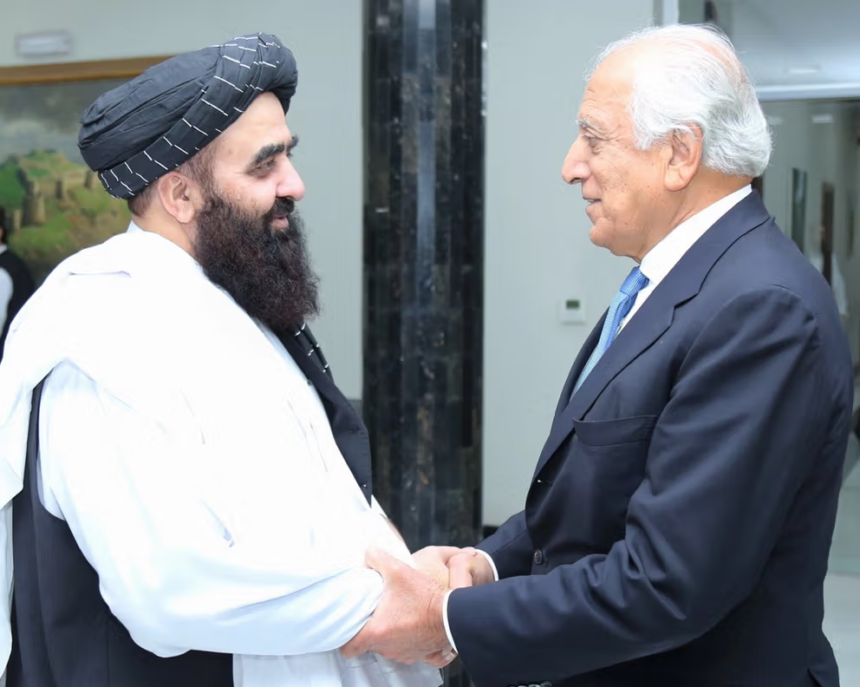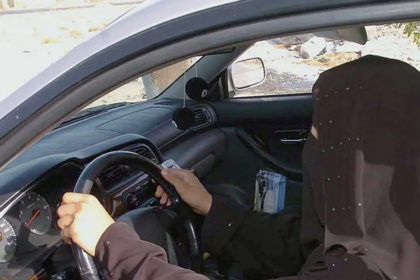RASC News Agency: Zalmay Khalilzad, the former U.S. envoy and chief architect of the Doha Agreement that paved the Taliban’s return to power, has once again re-emerged in Kabul’s political theater. Despite being described by American sources as a “private visit,” the timing and tone of his trip suggest a calculated mission one designed not for reconciliation or reform, but to preserve and rebrand the Taliban’s crumbling rule before it collapses under its own contradictions.
According to senior sources in Kabul, Khalilzad held a series of discreet meetings with the Taliban’s acting ministers of defense and foreign affairs, along with several other senior figures. During these encounters, he is said to have presented a set of proposals aimed at fabricating a façade of inclusivity within the Taliban’s monolithic structure. Chief among these suggestions was the strategic appointment of a handful of Tajik figures to symbolic government posts an attempt to manufacture the illusion of ethnic diversity and to mask the Pashtun-dominated regime’s political isolation.
Insiders familiar with the discussions claim that Khalilzad explicitly proposed four to five names of Tajik personalities who, in his view, could lend the Taliban regime a veneer of national representation. Yet, as analysts in Kabul note, these appointments would be purely cosmetic designed to deceive the international community and to simulate pluralism without relinquishing control or addressing the group’s systemic exclusion of non-Pashtuns.
In his talks with Taliban officials, Khalilzad reportedly warned that the group faces mounting pressure from Pakistan, deteriorating relations with neighboring states, and a growing crisis of legitimacy at home. To survive these challenges, he argued, the Taliban must seek what he called “internal legitimacy” by incorporating a few “influential but controllable” figures from non-Pashtun communities into their administrative hierarchy. Such token inclusions, he implied, could provide the regime with a new political façade to negotiate with regional powers and reduce dependency on Islamabad.
Khalilzad is also said to have assured the Taliban leadership that if they adopted this strategy, he would personally lobby for broader diplomatic recognition of their regime in Western and Islamic countries. Analysts interpret this as a continuation of Khalilzad’s shadow diplomacy a personal effort to preserve the legacy of the Doha Agreement and to prevent the Taliban’s regime from unraveling entirely.
Political observers see his latest maneuvers as deeply problematic. “This is not political inclusion it’s political engineering,” said one Kabul-based political scientist. “Khalilzad is trying to repaint a collapsing dictatorship with a thin brush of ethnic color. The Taliban’s oppression cannot be softened by appointing a few Tajik names into a structure built on exclusion, fear, and religious coercion.”
Experts argue that this effort to “diversify” the Taliban’s image is a desperate attempt to rescue an unrecognized regime that continues to suffocate Afghanistan’s social, cultural, and political life. Despite more than three years of rule, the Taliban have failed to build any institution capable of governance beyond repression. Their exclusion of women from education and employment, persecution of minorities, and total absence of democratic legitimacy have rendered them a pariah movement disguised as a government.
Sources further claim that Khalilzad’s behind-the-scenes involvement has raised concern among Afghanistani political exiles and human rights defenders, who see in his actions an effort to rehabilitate the Taliban’s image without demanding accountability for their crimes or reforms to their oppressive system. “Khalilzad seems determined to save the regime he helped create,” said another source. “But the Taliban’s problem isn’t an image crisis it’s a moral one. No amount of ethnic decoration can disguise tyranny.”
Historically, Khalilzad has sought to influence Western and regional policy in favor of engagement with the Taliban. During the Trump administration, he advocated international recognition of the group, framing it as a pragmatic necessity. However, regional dynamics especially Pakistan’s manipulative patronage and internal Taliban divisions undermined that agenda, leaving the group increasingly fractured and economically isolated.
Khalilzad’s reappearance in Kabul comes at a time of growing instability within the Taliban movement, marked by factional rivalries, worsening poverty, and discontent across Afghanistan’s non-Pashtun provinces. His push to integrate a few Tajik faces into the Taliban’s political façade is therefore viewed by many as an effort to delay, rather than prevent, the inevitable unraveling of a regime that lacks both domestic consent and moral authority.
For the Afghanistani people, however, Khalilzad’s so-called “advice” serves as a reminder of the international complicity that empowered the Taliban in the first place. The same diplomat who once negotiated their return to power now seeks to shield them from collapse not through reform or justice, but through cosmetic inclusion and political deception.
As one Kabul intellectual summarized:
“Khalilzad’s prescription for the Taliban is like painting flowers on a cage. The structure remains the same iron bars of repression, fear, and ethnic domination. The only thing that changes is the illusion.”






